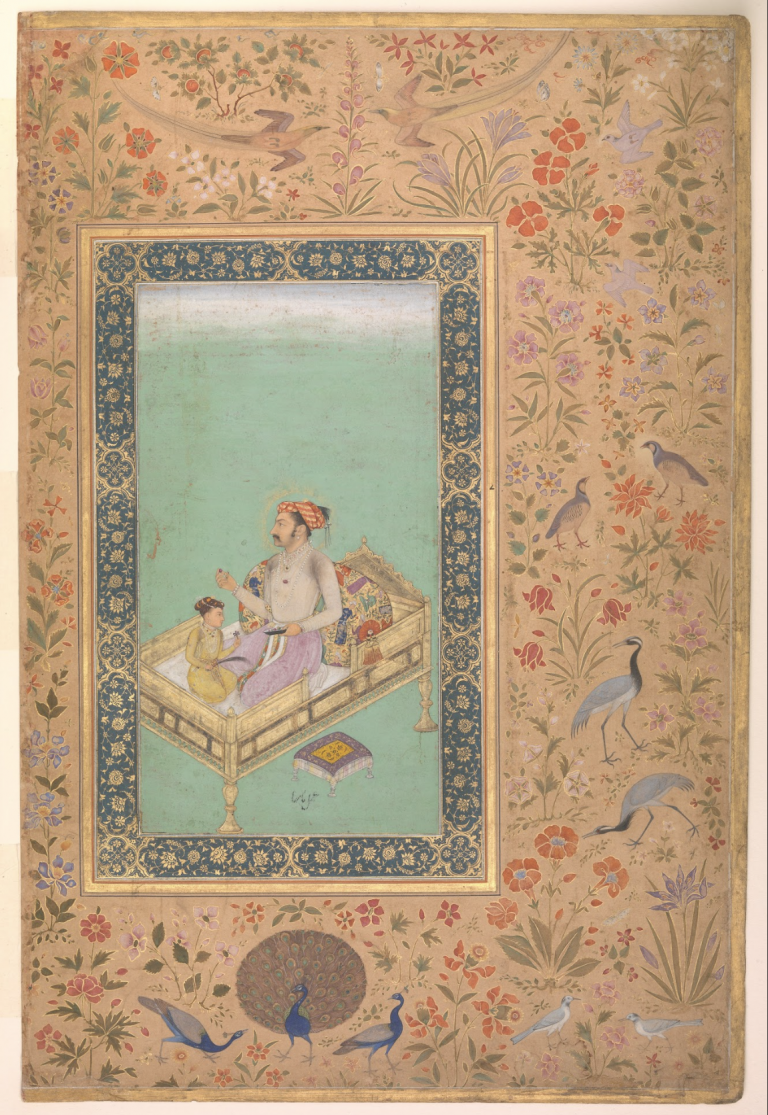‘Urban Testimonies’ was as fresh, puzzling and exhilarating as the metro milieu for which it purports to bear witness. In this very mixed-media smorgasbord, gallerist and curator Bhavna Kakar has brought together four young artists who have just post-graduated from her alma mater, M.S. U. Baroda. Nityananda Ojha builds bizarre and provocative sculptures with jewellery, while Deepjyoti Kalita constructs moving LED displays. Kartik Sood makes installations out of photographs and video snippets, and Siddhartha Karawal plays dress-up. As in any big city, there’s a whole lot going on.

The intimacy of Ojha’s work drew me close at once. This was as much to do with the subject matter as it was a natural response to the artist’s unusual selection of material: old jewellery. From what appeared to be thousands of discarded broaches, chains, earrings, and hairpins he built up nearly life-sized forms—a goat, and a forearm, and even a dangling man. While the panoply of adornments made for a dazzling impression, there was nothing precious about these sculptures as a whole. The bejewelled goat—endearingly sculpted with a perky curling tail, stares quizzically down at a gleaming red bone. Still more ominous was the piece Masturbation, in which a decapitated arm grips a long translucent shaft. Yet the greatest gasp must be reserved for No Other Way. In this life-sized sculpture a human figure of resin and jewellery dangles from a noose with nothing but a large bright green bone in his left hand.
My favourite work of Ojha’s however, was a quieter piece installed in the corner of the gallery, called simply, For Somebody. This work was not made of jewellery, although bones were not abandoned as a central motif. It was a hanging stainless steel sheet a little taller than the average person with 208 tiny square niches cut out. In each window hung a small black bonelike object—each one unique from the others. The sculpture swayed silently and each of the little resin bones curled and shimmered in the breeze, and the viewer was reflected in the broken surface of the polished stainless-steel.
If the work of Ojha lured me to look closer, then the two installations of Deepjyoti Kalita impelled me to stand back. Both were fibreglass, paper, and acrylic sculpture/installations set against a moving LED light display. I had never seen pieces that used technology in quite this way. In Decode, a man fell headfirst into a heap of dark coal-looking substance with the words Bring a Cloud at the bottom. Was this expressing hope on the part of the man or the viewer that a cloud would come in place of the coal or somehow soften the man’s fall? It was hard to decode.
The second Kalita installation brought up clearer associations. In this piece, The Incompetence of Being Complete, a mild-mannered man of fibreglass slides across the image of a bench to take different positions vis-à-vis two other figures—a person in a gas mask and a young man in jeans looking intently into what appears to be a typewriter encased in a glass sphere. The resonance was more local—and more about the subtle dynamics of negotiating an urban space. I thought of how one sizes up a park-bench. Who are you comfortable sitting next to? How close will you get? Will you seal yourself from those around you like the fellow in the mask, or can you lose yourself in an inner fantasy like the man with the typewriter treasure? Although largely unconscious, such decisions define the daily lives of Delhites across the city.

The work of Kartik Sood also invoked the question of anonymity in the urban environment. His strongest work was Plucking at the Heartstrings, an installation that consisted of ten small photographs—mostly of street children who were each lit up for a fraction of a second at a time. The light leapt from one image to the next, illuminating the small faces for barely enough time to register in the viewer’s mind (or heart). But there was something paradoxically poignant about this obstructive illumination. One is forced to look closer—look longer—to make out the faces that return your gaze for just an instant. I thought of the street children who pepper the roadsides of the Indian cityscape. The piece made me uncomfortably conscious of how deftly I have trained myself to blank out their figures on the roadside and their faces just inches away from the window of my auto—except for the occasional instant of recognition. Suddenly, a flash of really seeing that other person, and then the light changes and the insight is gone. Sood’s clever combination of simple elements—light and a few snapshots evoke with great efficacy the complex psychological encounter with child beggars that daily defines urban Indian existence.
The exhibition’s final artist, Siddhartha Kararwal, significantly lightened the mood. Who wouldn’t be happy to meet donkeys and silly space-costumes in an exhibition otherwise focused on alienation, physical remains, and the gaunt faces of children? Kararwal provided comic relief, but not without an underpinning of real thought and reflection.
His contribution to the show includes donkeys on the one hand, and aliens on the other. The photographic series Kalki Calling documents the adventures of the artist’s silver space man avatar in a world of trash. Kararwal dresses up in a makeshift uniform that recalls the baggy outfit of astronauts and strikes poses in the otherworldly arena of a vacant lot. At times the photograph catches him in a moment of heroic action, and at other points he stands eerily alongside a regular person, perhaps a local resident. I couldn’t help but wonder what on earth must that fellow have thought when he was approached by a silver-suited artist to take part in a photo-shoot.
Kalki Calling is complemented by another photo-series on the floor above, 10-part performance collaboration between Kararwal and artist Prayas Abhinav called Whackass! True to its name, the performance includes much beating of a stuffed donkey. Both artists are dressed in the same red and white striped cloth that the donkey has been sewn from—to the effect that all three characters look like runaways from a prison for delinquent barbers or violent candy canes. The narrative seems to focus around transportation. The donkey finally is tied to the top of an auto, and the three characters drive away. On the ground floor there is a stuffed donkey sculpture that helps tie the story together. It is really no more than a pile of rather grotesque stuffed donkeys much like the one in the Whackass series, but above are the words “You can’t please everyone.” All of a sudden I am reminded of a children’s story I heard somewhere long ago. There was once a father and a son going to the market to sell their donkey. At first they both walked beside the donkey, but then the handsome young man was chastised for not riding on the donkey himself. “Is the donkey your master?” an onlooker taunted—so the young man got on. A little further down the road the son was again abused, this time for not letting his elderly father ride on the donkey, so they decided to both ride side by side. This was too much for the donkey, which soon collapsed from fatigue.
Recalling the story brought new resonance to the Whackass series as well as the various donkey installations that accompanied it. It also struck me as an excellent metaphor for the challenges faced by a young artist in a world full of curators and critics and dealers each wanting something different from one’s practice.
After walking through the show it occurred to me that ‘Urban Testimonies’ was perhaps as much a meditation on duration as an exploration of urbanism or a showcase of new experiments with medium. The different textures of time were essential to the success of all of the artists’ works. In the case of Sood and Kalita’s installations, time was a literal material on the basis of which the pieces functioned. The Incompetence of Being Complete would not have worked without the slow shifting of the figure on the bench, nor would Plucking at the Heartstrings have had the same impact without the swift flicker of its lights. In the work of Kararwal and Ojha, time was itself a subject.
Death and the inevitable accompaniment of decay provided the powerful subtext of Ojha’s works, while Kararwal’s Kalki series leaps forward into an imagined future.
Speaking of time, quite a lot of it has passed since I have seen a serious show of such young and unestablished artists. I’ve gotten used to the same twenty or thirty names popping up regardless of the venue or the city. New blood from Baroda is welcomed news, and watching the development of young careers from such an early stage promises to be full of surprises. Will these young men develop into formidable forces in the decades to come? The city will decide and time will tell.
Urban Testimonies, LATITUDE 28, New Delhi, 17 July to 18 August 2010













